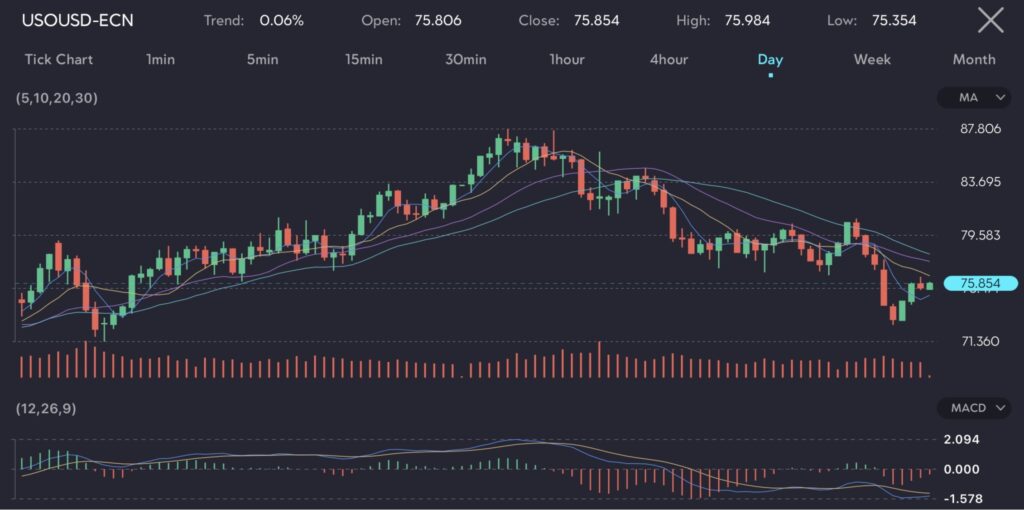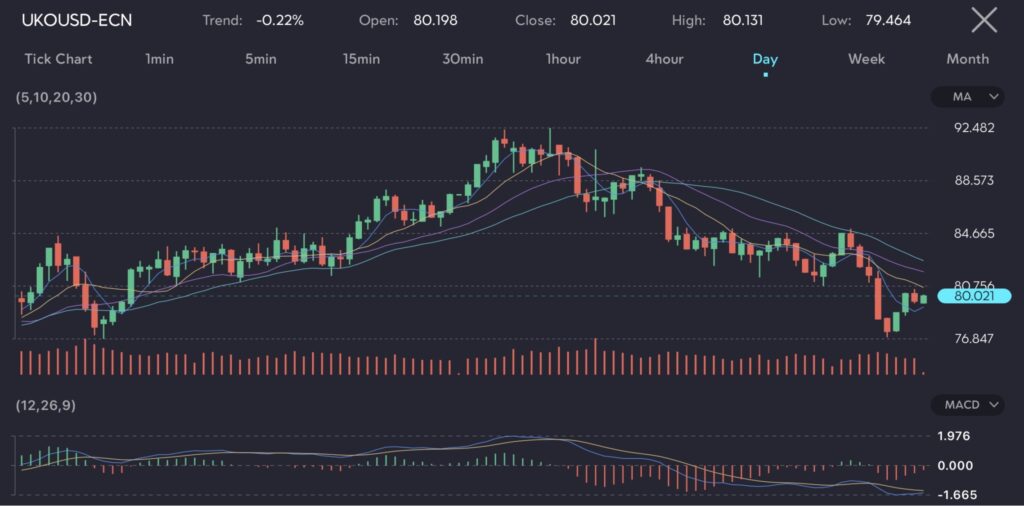Key points:
- Brent crude futures fell to $79.58, and WTI crude futures dropped to $75.49 per barrel.
- Strong US jobs data pushed out expectations for interest rate cuts, strengthening the US dollar.
- Call for snap legislative elections by Macron adds uncertainty to the eurozone market.
Oil prices nudged lower for the second consecutive session on Monday, pressured by a stronger dollar as expectations for US interest rate cuts were delayed following robust nonfarm payrolls data released on Friday.
Brent crude oil futures (Symbol: UKOUSD) slipped to $79.58 a barrel, while US WTI crude oil futures (Symbol: USOUSD) fell 4 cents to $75.49 a barrel by 0036 GMT.
Factors contributing to the bearish momentum of oil
The stronger-than-expected US jobs report, showing 272,000 new hires in May, significantly exceeded analysts’ expectations of 180,000 to 185,000. This led investors to adjust their expectations for interest rate cuts, causing the dollar to rally.
A firmer dollar makes dollar-denominated commodities like oil more expensive for holders of other currencies, contributing to the decline in oil prices.
In addition to the impact of the US jobs report, the euro came under pressure due to political uncertainty in the eurozone. The call for snap legislative elections by the French President Emmanuel Macron after the poor performance of his team against the far-right party added to market unease.
This uncertainty, combined with the strong US economic data, led to higher yields and further strengthened the US dollar.
Brent and WTI crude posted their third straight weekly loss last week, largely due to concerns over the plan by OPEC+ to unwind production cuts starting in October.
This plan, alongside a rise in OECD crude and product stocks, has heightened fears of an oversupplied market.


Images above showed the bearish momentum in oil prices, as observed on the VT Markets app.
Possibility for oil prices to rebound
Despite these bearish signals, analysts and traders expect summer holiday demand to help reduce stockpiles and support prices, with crude prices potentially reaching mid-$80 per barrel levels in the third quarter of 2024, contingent on signs of tightening from preliminary inventory data.
In the US, the government has stepped up purchases of crude oil to replenish the Strategic Petroleum Reserve following the recent drop in prices.
While in the Middle East, progress in talks between Oil Minister of Iraq Hayan Abdel-Ghani and Kurdistan region officials regarding the resumption of oil exports via the Iraq-Turkey pipeline adds another layer of complexity to the global supply picture.
This pipeline previously handled about 0.5% of global oil supply, and a resolution could impact market dynamics.
What oil traders should look out for in June
Oil prices may continue to face downward pressure due to a strong US dollar and market uncertainty. However, any significant developments from the Federal Reserve or geopolitical factors could shift market sentiment. Anticipated summer demand and potential supply constraints from the US may support prices.
Related article: How to trade oil CFDs
Given these dynamics, market participants should stay vigilant, sticking to a trading strategy and managing risks at a healthy level will be crucial for navigating the oil markets.









